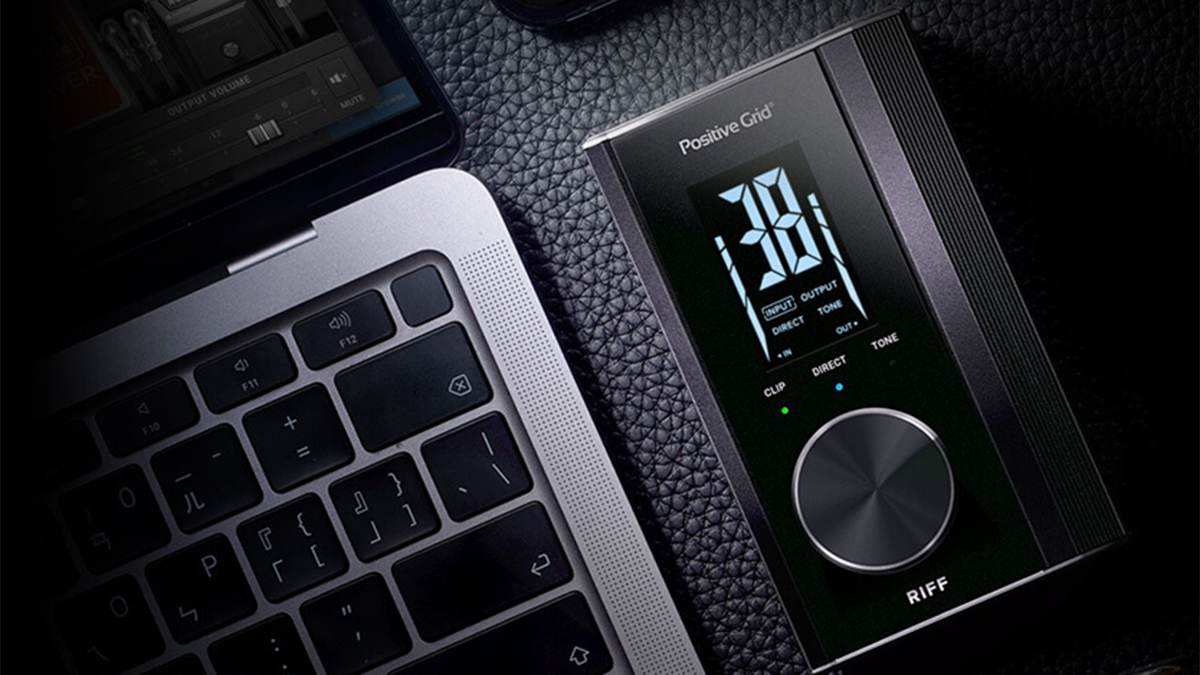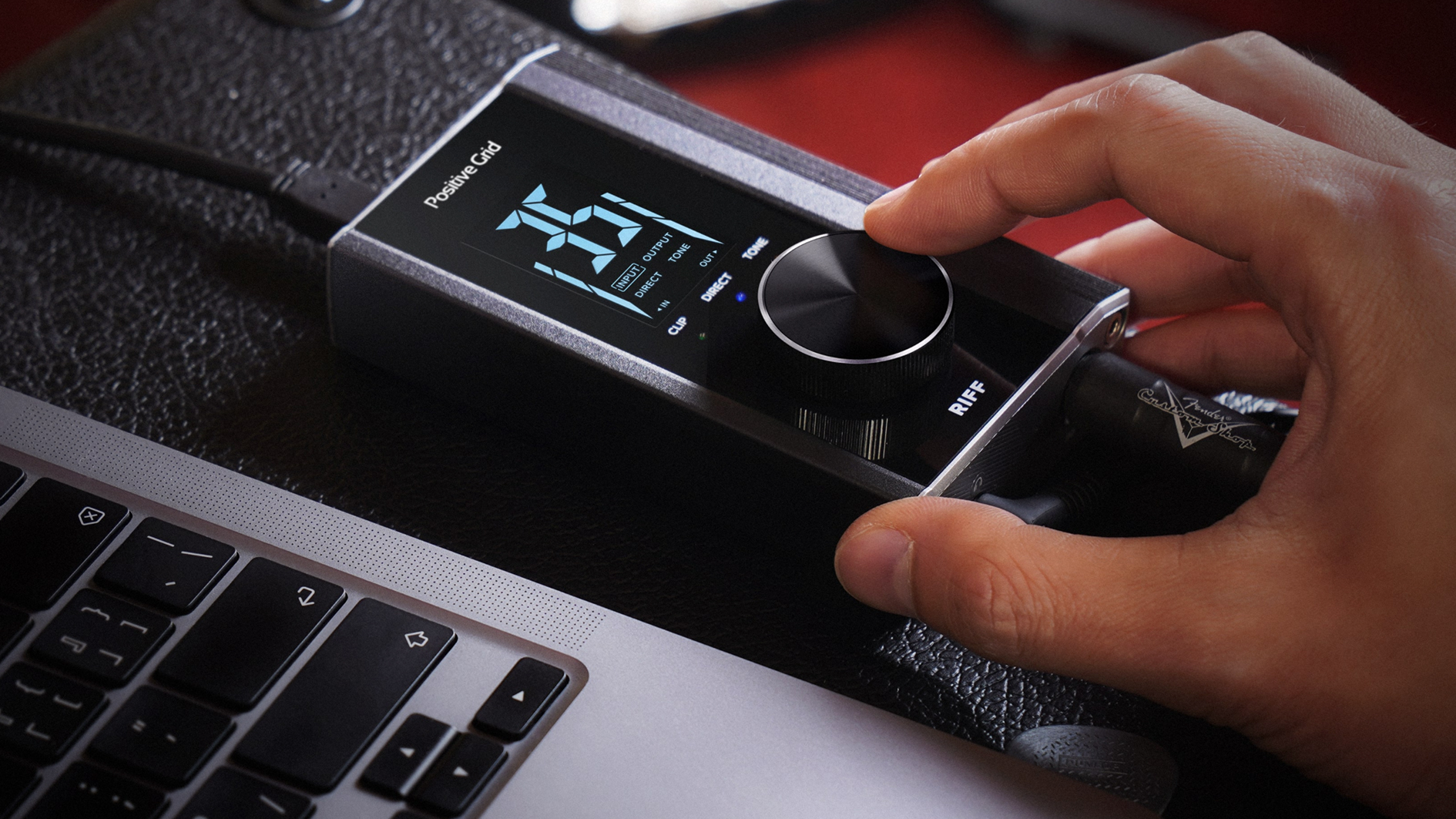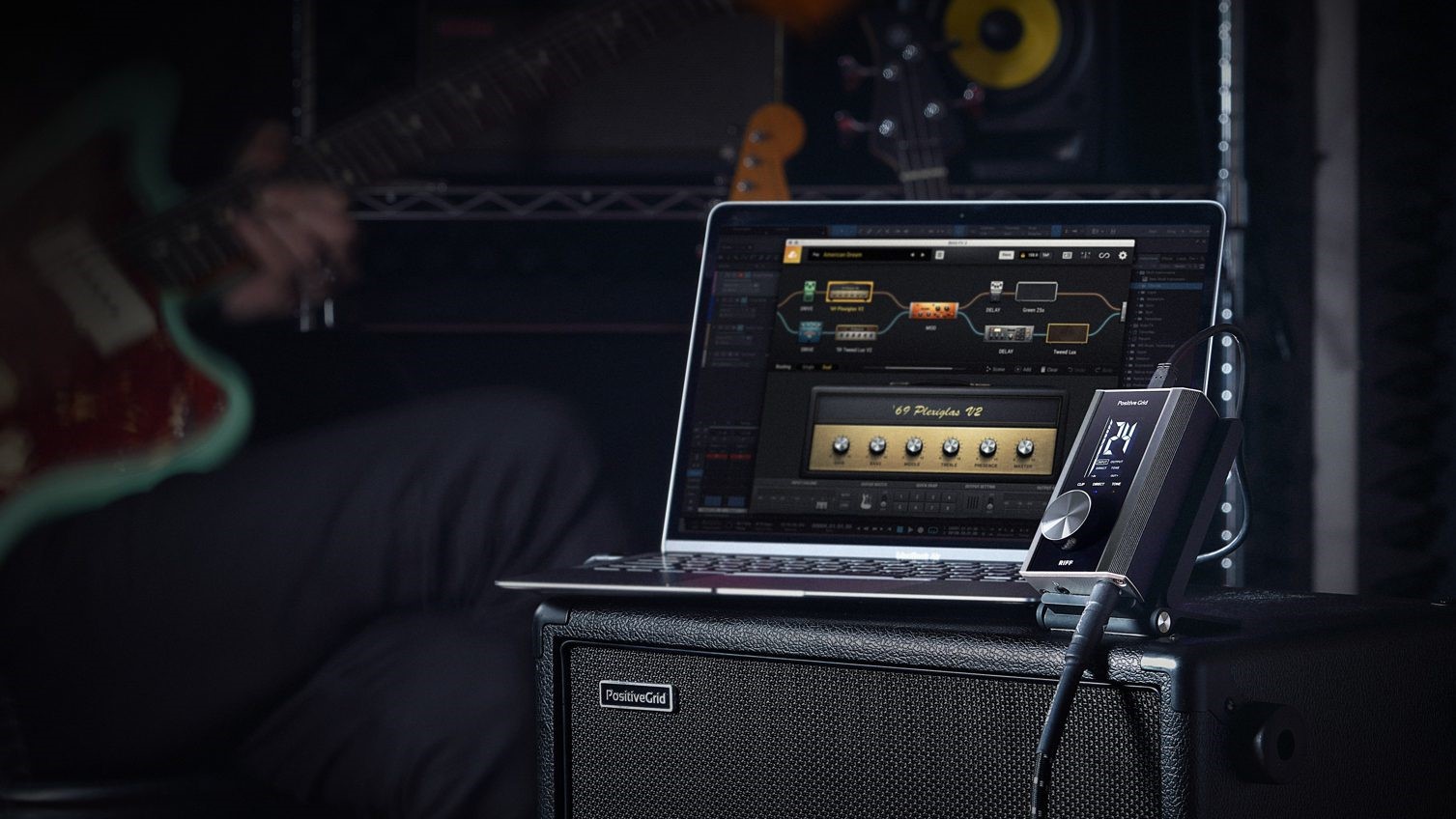Guitar World Verdict
If you're a guitarist looking for a streamlined, compact audio interface, then the Positive Grid Riff is well worth a look. It's got enough power to keep up with the rest of the pack, and is well-priced for beginner producers who want good quality guitar recordings, stat.
Pros
- +
Layout is super simple
- +
Multi-function dial is a cool touch
- +
Compact
- +
Well priced
- +
Full Bias FX2 integration
Cons
- -
Micro USB out is a strange choice
- -
Can take a while to figure out
You can trust Guitar World
Sample/bit rate: 24bit / 96kHz high-resolution audio
Dynamic Range: 113dB
Frequency Response: 20 ~20k
Input: 1/4" x1 (mono, for instrument)
Output: 1/4“ x 1 (Line level stereo, output impedance: 47k ohm), 1/8“ x1 (Headphone, stereo, compatible impedance: 16~64 ohm)
Weight and dimensions: 156g, 0.85" x 2.16" x 3.47" (2.16 cm x 5.49 cm x 8.81 cm)
Device Compatibility: Windows 8 or later/macOS 10.11 or later/iOS 11 or later
Purchase from: Positive Grid
Save on the Spark amp, BIAS software and more with this year's Black Friday Positive Grid deals.
Since the 2014 inception of their Bias FX and amp software, Positive Grid has been going from strength to strength in the guitar world. After releasing the game-changing Spark amp in 2019 – and throwing the rest of the guitar practice amp market into disarray – Positive Grid has returned to the fray with the Riff USB audio interface. Designed to make recording for guitar and bass players a super simple and intuitive experience, it's only natural that we wanted to have a go on one.
Its simple, straightforward design is one of the things that drew us to the Riff. A lot of guitarists (some of us included) are reluctant to stray from the analog paths they're familiar with – so the Riff, with its lack of buttons, switches and scary-looking extras, comes across a little less daunting than some more complex guitar audio interfaces.
The Riff's main control knob is a multi-purpose affair – enabling you to adjust an array of parameters including input and output levels and a direct monitoring level, as well as the option to switch between three preamp settings. Not only that, but with the Riff fully integrated into Positive Grid's Bias FX 2, it can also be used for various other uses within the plugin itself, such as changing amp models.
Positive Grid Riff review: Features
The Riff has one 1/4" instrument input for your guitar or bass, one 1/4" line-level output to send to a powered speaker and a 1/8" headphone output – and records at a 24-bit/96kHz resolution with a 113dB dynamic range – impressive for an interface of this size and price point. Speaking of the price-point, the Riff usually retails for $179, but Positive Grid is currently selling them for only $99 as an introductory offer.
Included with the Riff is a copy of Positive Grid's Bias FX 2 LE effects modeling software, and PreSonus Studio One Prime recording software – so you've everything you need to start recording guitar, bass, or anything else you can plug a 1/4" jack into.

Out of the box, the Riff feels well-made, durable and really solid. From a range of four different finishes – blue, red, green and black – we're reviewing the all-black version, which looks slick and unassuming. This finish, along with the all-metal construction, reinforces the impression that the Riff is a utilitarian, no-frills interface.
Further into the box, and hidden away under some extra packaging is the Quick Start guide – a numbered run-down of the Riff and its features – as well as one micro USB to USB-A cable and one micro USB to Lightning cable for use with any iOS device. The micro-USB output seems like a slightly strange move from PG, as there are many higher speed, higher output connections that could be used. We'd have to put this choice down to lack of internal real estate though, which is fair enough.
Positive Grid Riff review: Performance
When it came to setting up the Riff, the process was easy. For this review, the Riff was being used with Logic Pro X on a MacBook Pro – and once we'd plugged it in, there was no need to download any extra drivers or other software – although PC users will need to do so from Positive Grid's help centre. Opening up a new project using the Riff as our input device was as easy as doing so with any other audio interface.
The Riff comes to life, however, when used in conjunction with Bias FX 2. With Bias installed, your Riff will be automatically recognized as your main audio device – and then the Auto Gain process begins. Auto Gain automatically adjusts your gain level depending on the output of the pickups on your guitar, which is a really useful feature for those who're swapping guitars throughout a recording session. To be honest though, it did take a few attempts to get it right. Another impressive and surprisingly useful feature is the Tone mode, which enables you to switch between three separate preamp modes – mild compression, full range and mid boost.

Using the Riff in such close collaboration with the Bias software, it was plain to see why so many people are using their computers as practice amps right now. We found that – with the Riff's minor latency issues solved with a lowering of the buffer size – this setup was ideal for anyone who wants to just plug in, chuck a pair of headphones on and switch off from the outside world for a bit.
A portable practice setup is all well and good though, but we're here to see how the Riff stands up against all the other guitar-based audio interfaces on the market when it comes to recording. Long story short, it does a very good job.
The quality of the recording was clean and high-fidelity, with no unwanted background noise, and the quality of the experience was up there too – with little to no latency issues.
Positive Grid Riff review: Verdict
Positive Grid has outdone itself with the Riff. As a company which prides itself on making high quality, value for money products, the Riff certainly ticks those boxes, especially with an introductory price coming in at under $100. The world of recording hardware can be thoroughly confusing and intimidating, so the simplistic approach PG has taken will only gain fans and users. We were impressed by the Riff's sheer usability – and the compatibility with other Positive Grid software turns it into something much more powerful.
James is a freelance writer and former Junior Deals Writer at Guitar World. Before writing, James worked as a guitar salesman at a local music store, so he knows a thing or two about matching people with their perfect instruments. James also has experience working in other areas of the music trade, having briefly worked for online music distributor, RouteNote. James is a guitarist, bassist and drummer and has also toured the UK and Europe with his old band Hypophora.
"Brilliantly precise monitoring headphones with wide open-back sound": Audio-Technica ATH-R70XA review
“We’ve painstakingly restored Les Paul’s original gear”: The Les Paul Recording Studio opens in Hollywood – bringing the innovator’s revolutionary gear to a whole new generation of musicians












